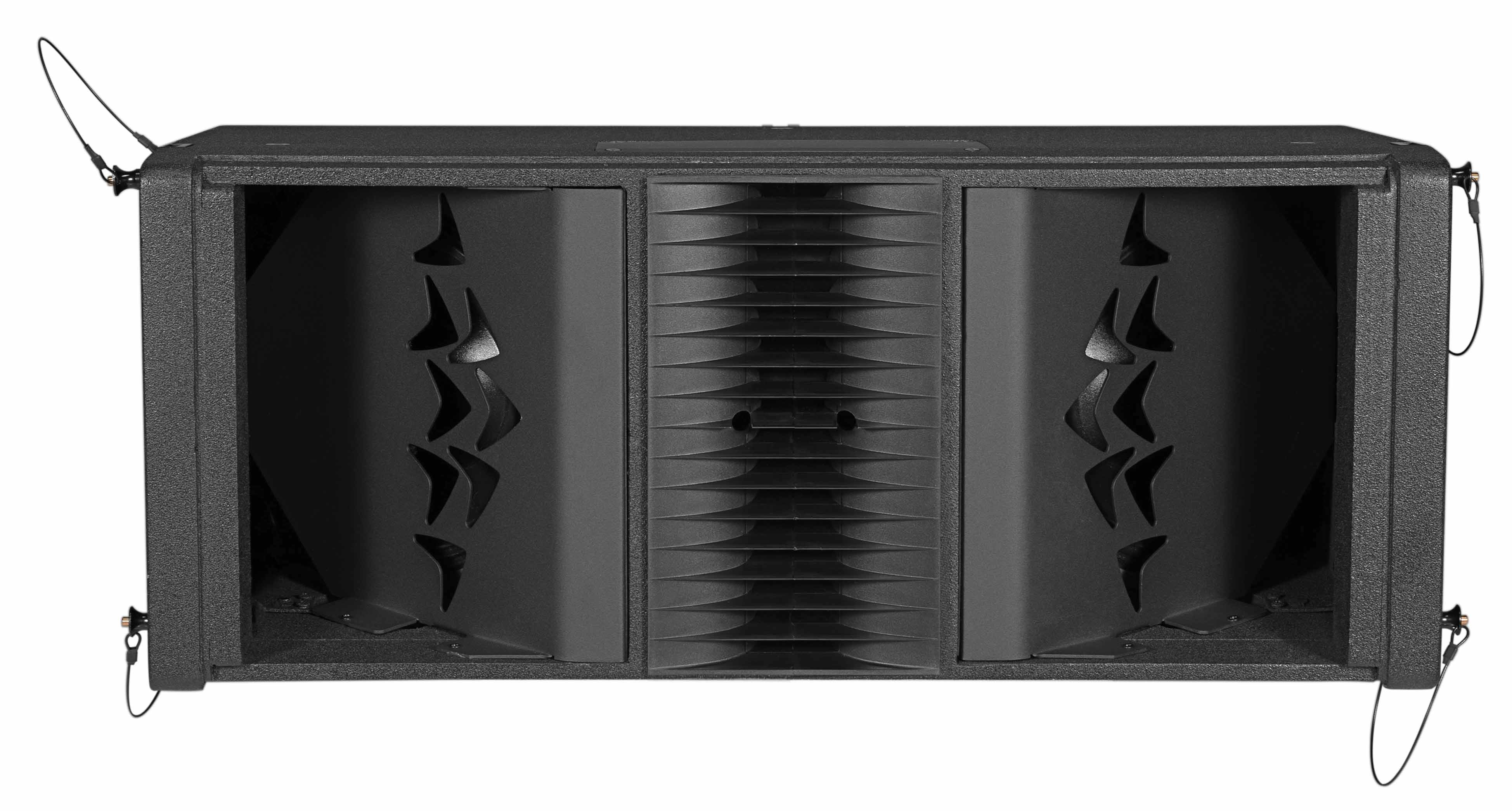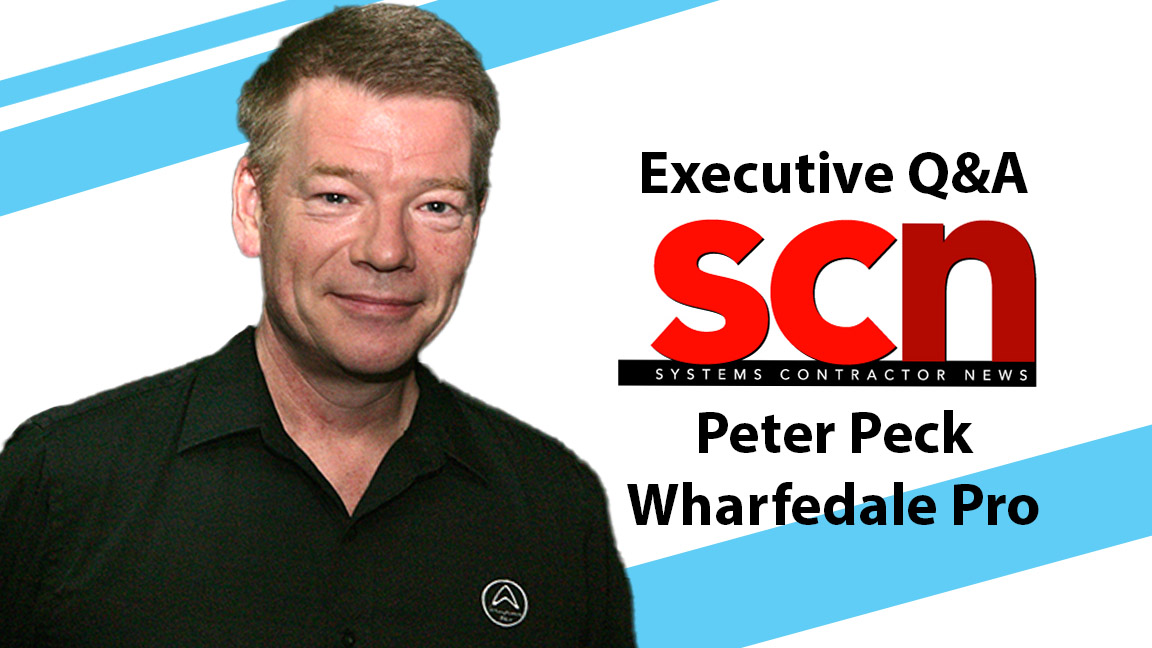SCN: How long have you been with this company, and what are your responsibilities?
Peter Peck: I have been with Wharfedale Pro for eight years. My main responsibility is simply to "make it easy." Regardless of the marketing manager title, the critical responsibility is to ensure that we make everything we do easy for the channel. Our distributors, dealers, and customers have busy lives and often complex businesses—so, at every point in the process, we need to deliver communications, products, and solutions which simplify the journey from product concept to completed project.

SCN: There have been a lot of changes in audio technology over the past quarter of a century. What do you think have been some of the most significant?
PP: Of course, we are all aware of the technological advancements that have happened, such as the growth of the line array, the continued improvements of amplification efficiency, and the creation of single cable networked solutions. However, the most significant changes in my view revolve around the customer experience. Here there are two key changes. First is product reliability. In today's world, the product must be reliable and (worst case) spare parts must be available globally. Quality of service has significantly improved over the 25 years. Second is the expectation of sonic quality from the audience. We all enjoy high-quality audio at home and in the car, so the audience also expects high-quality audio in the café or at the gig. The audience expects to be impressed with today’s quality.
[Executive Q&A: Sign of the Times]
SCN: How does AI figure into Wharfedale Pro’s product development?
PP: At this moment, the reality is that AI is not a critical tool for us internally. It certainly didn’t help at all with this interview! Of course, let’s see how it plays out into the future.
SCN: When I think Wharfedale Pro, I think speakers—but you also sell microphones. Are your mics just made for music, or are they gaining interest in corporate and education environments?
PP: As a brand, it is important for us to always remember what we are good at. Our philosophy for all products has always been to manufacture durable, easy-to-repair, and value-for-money solutions. This also applies to our microphones. Customers use our DM series of dynamic mics in the most extreme conditions and, as a result, we have built a strong reputation for general-purpose mics that just work for any occasion.
SCN: What makes your IMPACT-X Series of loudspeakers and subwoofers unique?
PP: As part of the "make this easy" process I mentioned above, we have streamlined our portfolio to be a good/better/best offering. IMPACT-X is our "good" series of passive loudspeakers designed for budget-conscious, entry-level applications. Often, competitive entry-level or budget product is manufactured in third-party OEM factories using common components. However, at Wharfedale Pro, we simply don’t do that. IMPACT-X is manufactured in our own dedicated factory using our own staff, our own machinery, and our own drivers, which are also made in-house. This means that we are in control of the product quality so that the entry-level customer is not disappointed.

SCN: How does your EVO-Fold waveguide technology improve your speaker performance?
PP: Our EVO‑Fold waveguide has been meticulously (some might say obsessively) designed by Remo Orsoni, our R&D director. EVO-Fold reduces the usual phase issues that traditional two-way line arrays have due to them having the drive units physically some distance apart in the array. The EVO-Fold horn combines a unique folded and manifold design. The most advanced FEM technology has been used to create this. The high-mid energy exits produce a uniphasic sound in the widest range of frequencies. And visually, the detail of the EVO‑Fold waveguide is a work of art. In the end, EVO‑Fold delivers smooth frequency dispersion.
SCN: Immersive audio is a popular buzzword these days. How difficult is it to design immersive audio systems?
PP: For this question, let’s check in with Alex Lane, our applications and solutions manager, who deals with this on a daily basis. Alex said, “Speaking purely on a loudspeaker/amplification basis, it’s not so difficult, but it can be costly. Luckily, there are some great software tools in Immersive audio now that can compensate for speaker position, allowing flexibility in system design and architectural limitations. Simply put, the selection of the correct speaker, DSP, and amplification electronics is the key. Coaxial speakers like our GPL series provide a fantastic polar pattern and lend themselves well to spatial audio. With this, combined with multichannel DSP amplifiers and audio over Ethernet (our DP-N range, for example), you can remove a lot of cable spaghetti, resulting in reduced costs in copper and a value-for-money DSP/amp platform."
[Editorial: Ballad of the Broken Signage]
SCN: Each bar or club is different, of course, but what are some of the common audio challenges in these environments?
PP: Architecture, budget, application, acoustics, and many other factors come into it. It’s always key to properly assess the specific clients’ goals and limitations to find the best possible solution. Yes, every bar and every club are different, but the most common challenge is to get the clear requirements and expectations for the project. In our face-to-face training seminars for our global distribution partners, a big focus is on communication. Asking the right questions can save time and help ensure a successful project.
SCN: How is Wharfedale Pro celebrating its 25th anniversary?
PP: We’ve been thinking about how to celebrate this anniversary for … 25 years! What has made Wharfedale Pro so successful over those years is the enthusiasm and support of our business partners and our loyal customers. We’re therefore planning an event in Q4 where we will have the chance to celebrate with music and entertainment with our partners.

